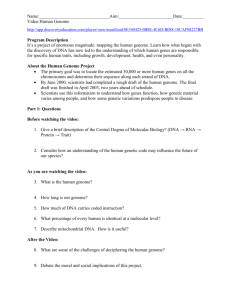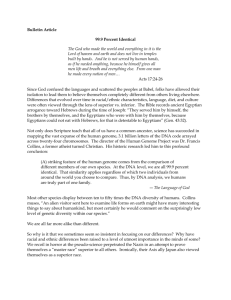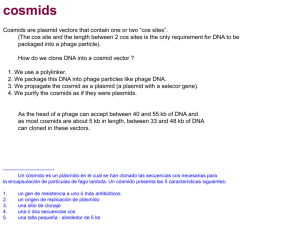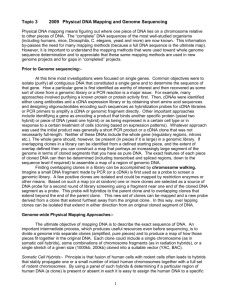Genetic Mapping of Structural Chromosomal Anomalies
advertisement
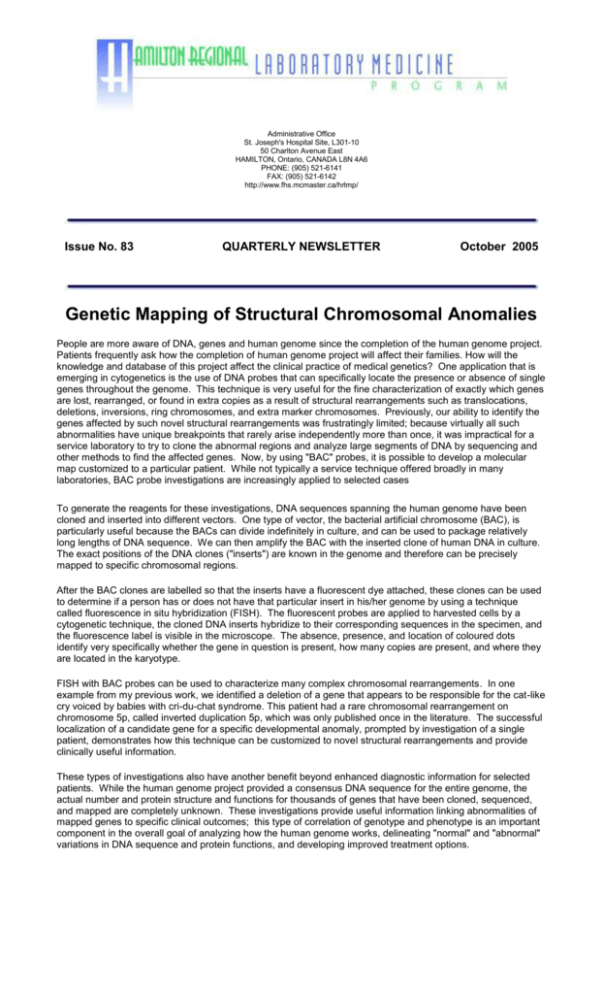
Administrative Office St. Joseph's Hospital Site, L301-10 50 Charlton Avenue East HAMILTON, Ontario, CANADA L8N 4A6 PHONE: (905) 521-6141 FAX: (905) 521-6142 http://www.fhs.mcmaster.ca/hrlmp/ Issue No. 83 QUARTERLY NEWSLETTER October 2005 Genetic Mapping of Structural Chromosomal Anomalies People are more aware of DNA, genes and human genome since the completion of the human genome project. Patients frequently ask how the completion of human genome project will affect their families. How will the knowledge and database of this project affect the clinical practice of medical genetics? One application that is emerging in cytogenetics is the use of DNA probes that can specifically locate the presence or absence of single genes throughout the genome. This technique is very useful for the fine characterization of exactly which genes are lost, rearranged, or found in extra copies as a result of structural rearrangements such as translocations, deletions, inversions, ring chromosomes, and extra marker chromosomes. Previously, our ability to identify the genes affected by such novel structural rearrangements was frustratingly limited; because virtually all such abnormalities have unique breakpoints that rarely arise independently more than once, it was impractical for a service laboratory to try to clone the abnormal regions and analyze large segments of DNA by sequencing and other methods to find the affected genes. Now, by using "BAC" probes, it is possible to develop a molecular map customized to a particular patient. While not typically a service technique offered broadly in many laboratories, BAC probe investigations are increasingly applied to selected cases To generate the reagents for these investigations, DNA sequences spanning the human genome have been cloned and inserted into different vectors. One type of vector, the bacterial artificial chromosome (BAC), is particularly useful because the BACs can divide indefinitely in culture, and can be used to package relatively long lengths of DNA sequence. We can then amplify the BAC with the inserted clone of human DNA in culture. The exact positions of the DNA clones ("inserts") are known in the genome and therefore can be precisely mapped to specific chromosomal regions. After the BAC clones are labelled so that the inserts have a fluorescent dye attached, these clones can be used to determine if a person has or does not have that particular insert in his/her genome by using a technique called fluorescence in situ hybridization (FISH). The fluorescent probes are applied to harvested cells by a cytogenetic technique, the cloned DNA inserts hybridize to their corresponding sequences in the specimen, and the fluorescence label is visible in the microscope. The absence, presence, and location of coloured dots identify very specifically whether the gene in question is present, how many copies are present, and where they are located in the karyotype. FISH with BAC probes can be used to characterize many complex chromosomal rearrangements. In one example from my previous work, we identified a deletion of a gene that appears to be responsible for the cat-like cry voiced by babies with cri-du-chat syndrome. This patient had a rare chromosomal rearrangement on chromosome 5p, called inverted duplication 5p, which was only published once in the literature. The successful localization of a candidate gene for a specific developmental anomaly, prompted by investigation of a single patient, demonstrates how this technique can be customized to novel structural rearrangements and provide clinically useful information. These types of investigations also have another benefit beyond enhanced diagnostic information for selected patients. While the human genome project provided a consensus DNA sequence for the entire genome, the actual number and protein structure and functions for thousands of genes that have been cloned, sequenced, and mapped are completely unknown. These investigations provide useful information linking abnormalities of mapped genes to specific clinical outcomes; this type of correlation of genotype and phenotype is an important component in the overall goal of analyzing how the human genome works, delineating "normal" and "abnormal" variations in DNA sequence and protein functions, and developing improved treatment options. Dr. Jia-Chi (Jack) Wang, MD, MSc., Ph.D., FCCMG Head, Cytogenetics Hamilton Regional Laboratory Medicine Program MUMC Site


